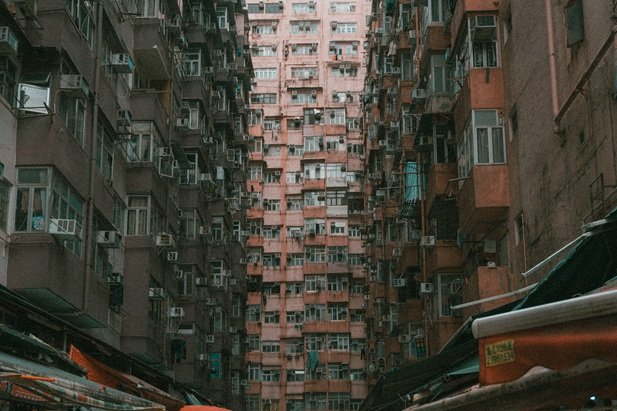The Monster Building: Hong Kong’s Iconic Urban Jungle
In the heart of Quarry Bay, there’s a building that feels like something straight out of a sci-fi movie: the Monster Building. This towering complex of interlinked high-rise apartments has become a symbol of Hong Kong’s dense urban living, and it’s not hard to see why it has earned its place in the spotlight.
Why Is It Called the "Monster Building"?
The nickname “Monster Building” wasn’t given lightly. The complex, officially known as Mong Kok Commercial and Residential Building, earned its monstrous moniker due to its overwhelming size and the chaotic, maze-like arrangement of its structure. The building consists of several interconnected towers, creating an almost alien-looking cityscape of overlapping balconies, stairwells, and windows. From a distance, the sight of these intertwined structures rising high above the street level can appear imposing, much like a giant monster rising from the ground. The name stuck, perfectly capturing the building’s raw energy and intensity, making it an unforgettable landmark.
A Cinematic Landmark
The Monster Building is no stranger to movie buffs. It became internationally famous after being featured in Transformers: Age of Extinction, where it served as a backdrop for one of the film’s most iconic scenes. With its maze-like design and overlapping balconies, the building feels otherworldly, almost like a futuristic city from a post-apocalyptic world. It’s one of those places that immediately captivates you—an architectural wonder that seems too complex to be real.
As a photographer, the Monster Building offers endless opportunities for capturing the chaos and beauty of urban design. The way the balconies overlap, the rows of windows stacked on top of one another, and the repetition of similar shapes give the building a striking visual rhythm. The light bouncing off its surfaces at different times of day creates dramatic shadows and reflections, making each shot unique. It's a photographer's playground where the geometry of the space is both overwhelming and mesmerizing.
A Brief History
Constructed in the late 1960s, the Monster Building was originally built as a solution to Hong Kong’s growing population. The city, experiencing rapid urbanization, needed to accommodate a rising number of residents in its limited space. The building was designed as a massive, vertical solution to house many people in a relatively small area. Over the years, it has become a symbol of Hong Kong’s dense, multi-layered living environment, where the city’s urban landscape seems to stretch as far as the eye can see.
While the building’s original design was functional, it has since become an architectural icon due to its towering presence and its juxtaposition with the surrounding environment. What was once simply a place for people to live has now transformed into a must-see spot for urban explorers and photographers, drawn to its unique aesthetic and storied past.
An Urban Jungle
What makes the Monster Building stand out is its massive scale. The structure is more than just a building—it’s a miniature city within itself. The apartments, arranged in blocks, seem to rise endlessly into the sky. Looking up at the imposing façade, it’s easy to get lost in the complexity of the architecture. The sense of being dwarfed by the sheer size of the building is something I find truly awe-inspiring.
The interior courtyards are another fascinating part of the building. These spaces are often crowded with life—residents chatting, children playing, and people going about their daily routines. It's a stark contrast to the outer appearance, where the building feels cold and distant. But these courtyards, buzzing with energy, remind me that even the most massive structures are filled with individual stories.
A Photographer’s Dream
For photographers, the Monster Building is a dream. It’s not just the architectural design that draws me in, but the way it interacts with the surrounding environment. The narrow alleys and street-level views offer a chance to capture the contrast between Hong Kong's modernity and its historic roots. Whether it’s the neon lights at night, the reflections during the day, or the view of the building from a distance, there’s always a new angle to explore.










